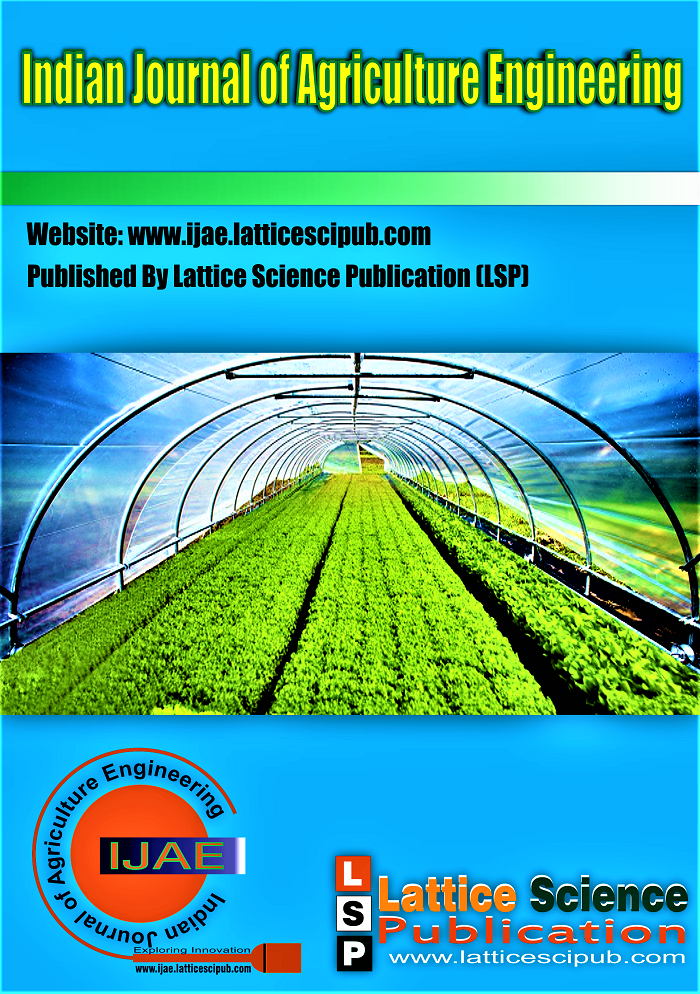Sustainability of Rice Wheat Cropping System in India
Main Article Content
Abstract
India's rice-wheat cropping system (RWCS), responsible for 40% of the nation's food grain production, has been a successful contributor to food security. However, despite nearly half of India's populationrelying directly or indirectly on agriculture, and agriculture itself contributing 18% to the country's economy, challenges loom large. One pressing issue is the Russia-Ukraine conflict, disrupting grain and fertilizer supplies, causing fertilizer prices to surge, and adding to the burden of already debt-ridden farmers. This crisis highlights the vulnerability of an agricultural system heavily reliant on external factors. Moreover, the RWCS faces environmental threats. Depleting groundwater levels from over-irrigation and excessive chemical use pose long-term risks. The use of chemicals, in response to diminishing soil health, leads to the harmful effects of biomagnification and eutrophication, disrupting food webs and chains, and impacting both ecosystems and human health [5] [7]. A shift toward sustainable and diversified agriculture is imperative to secure the future. Investing in modern farming practices, promoting organic farming, and encouraging crop rotation can help reduce the system's environmental toll. Additionally, improving access to credit and insurance for farmers canease their financial burdens and ensure their livelihoods. In the face of these challenges, India must consider long-term sustainability to safeguard its food security, environment, and the well-being of itsagricultural workforce.
Downloads
Article Details

This work is licensed under a Creative Commons Attribution-NonCommercial-NoDerivatives 4.0 International License.
How to Cite
References
Kisi, O., Parmar, K. S., Mahdavi-Meymand, A., Adnan, R. M., Shahid, S., & Zounemat- Kermani, M. (2023). Water Quality Prediction of the Yamuna River in India Using Hybrid Neuro- Fuzzy Models. Water, 15(6), 1095. doi: https://doi.org/10.3390/w15061095
Ladejinsky, W. (1973). How Green Is the Indian Green Revolution? Economic and Political Weekly, 8(52), A133–A144. http://www.jstor.org/stable/4363316
Loomba, J. F. (1972). U.S. Aid to India 1951-1967: A Study In Decision-Making. India Quarterly, 28(4), 304–331. http://www.jstor.org/stable/45070339
Chand, R., & T. Haque. (1998). Rice-Wheat Crop System in Indo-Gangetic Region: Issues concerning Sustainability. Economic and Political Weekly, 33(26), A108–A112. http://www.jstor.org/stable/4406933
Niranjan Pant. (1987). Ground Water Depletion. Economic and Political Weekly, 22(6), 219–220. http://www.jstor.org/stable/4376643
Praduman Kumar, P. K. Joshi, C. Johansen, & M. Asokan. (1998). Sustainability of Rice-Wheat Based Cropping Systems in India: Socio-Economic and Policy Issues. Economic and Political Weekly, 33(39), A152–A158. http://www.jstor.org/stable/4407212
Welch, E. B. (1976). Eutrophication. Journal (Water Pollution Control Federation), 48(6), 1335– 1338. http://www.jstor.org/stable/25039029
Mahato, A., & Roy, S. (2017). Tillage. Indian Literature, 61(2 (298)), 39–39. https://www.jstor.org/stable/26791216
Paul W. Unger. (2011). Tillage Methods for Conserving Soil Water: Then and Now. Water Resources IMPACT, 13(6), 12–14. http://www.jstor.org/stable/wateresoimpa.13.6.0012
Solomon, G. M., & Weiss, P. M. (2002). Chemical Contaminants in Breast Milk: Time Trends and Regional Variability. Environmental Health Perspectives, 110(6), A339–A347. http://www.jstor.org/stable/3455186
Ehrlich, P., & Walker, B. (1998). Rivets and Redundancy. BioScience, 48(5), 387–387. https://doi.org/10.2307/1313377
Kan, P. (2015). TOWARDS A CRITICAL POIESIS: CLIMATE JUSTICE AND DISPLACEMENT.
Virginia Environmental Law Journal, 33(1), 23–55. http://www.jstor.org/stable/24789369
P. K. Shetty. (2004). Socio-Ecological Implications of Pesticide Use in India. Economic and Political Weekly, 39(49), 5261–5267. http://www.jstor.org/stable/4415873
Boudou, A., & Ribeyre, F. (1997). Aquatic Ecotoxicology: From the Ecosystem to the Cellular and Molecular Levels. Environmental Health Perspectives, 105, 21–35. https://doi.org/10.2307/3433395
Stanley, D. A., & Stout, J. C. (2014). Pollinator sharing between mass-flowering oilseed rape and co-flowering wild plants: implications for wild plant pollination. Plant Ecology, 215(3), 315–325. http://www.jstor.org/stable/24552055
Darapu, Srikanth Satish Kumar, Bomma, H. S., Sankeerth, K. V. S., & Boosala, S. (2019). Determination of Ground Water Stressed Regions of Visakhapatnam District using ArcMap. In International Journal of Recent Technology and Engineering (IJRTE) (Vol. 8, Issue 4, pp. 11546–11549). https://doi.org/10.35940/ijrte.d4442.118419
Deepthi, Lakshmi, V. S., & Babu, M. C. (2020). Bioremediation of Wastewater using Invasive Bivalves. In International Journal of Innovative Technology and Exploring Engineering (Vol. 9, Issue 3, pp. 3077–3079). https://doi.org/10.35940/ijitee.c8475.019320
M, R., & Rajakumar, S. (2019). Determinants of Online Purchase Decision of Green Products. In International Journal of Engineering and Advanced Technology (Vol. 9, Issue 1, pp. 1477–1481). https://doi.org/10.35940/ijeat.a1262.109119





